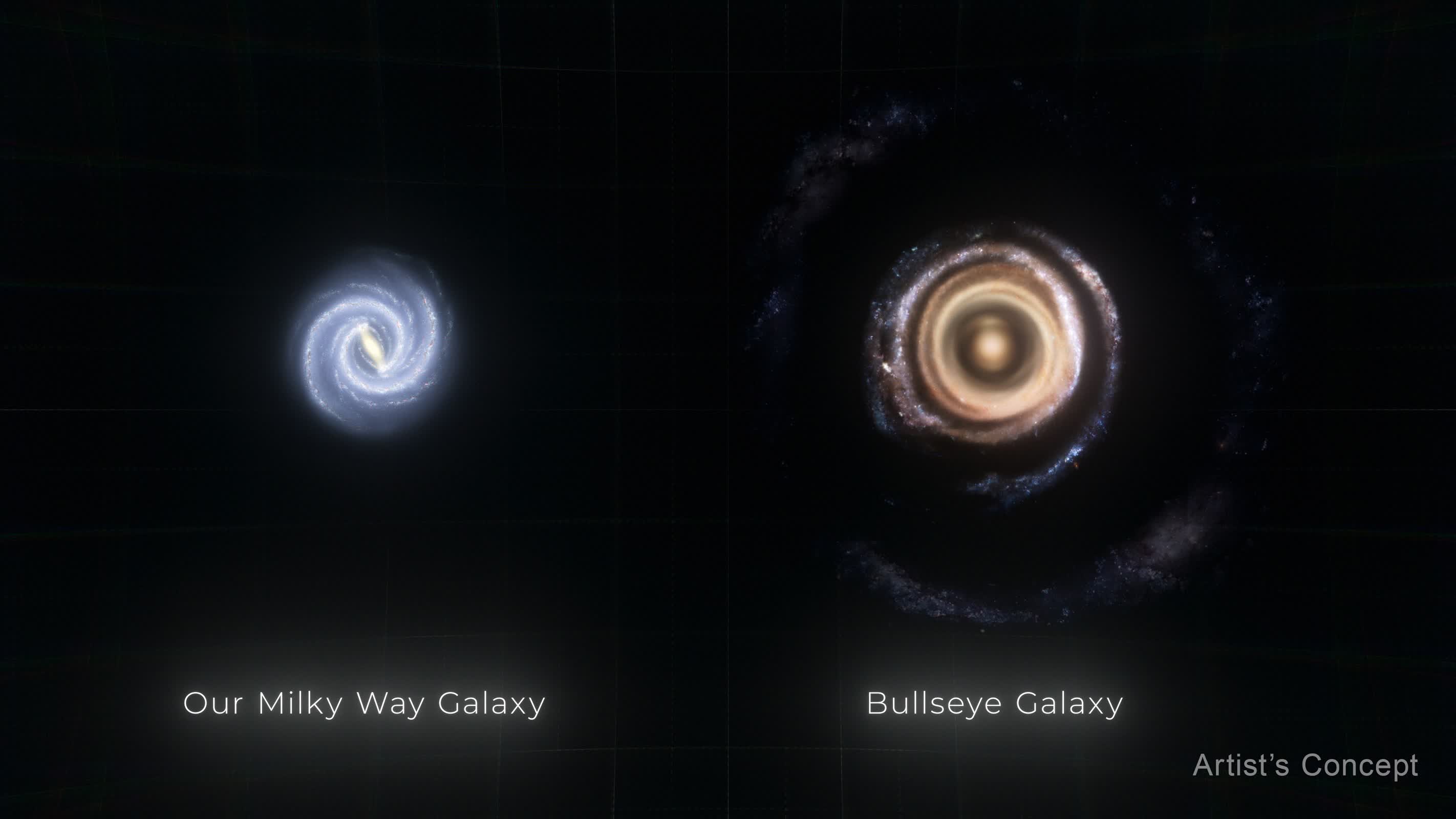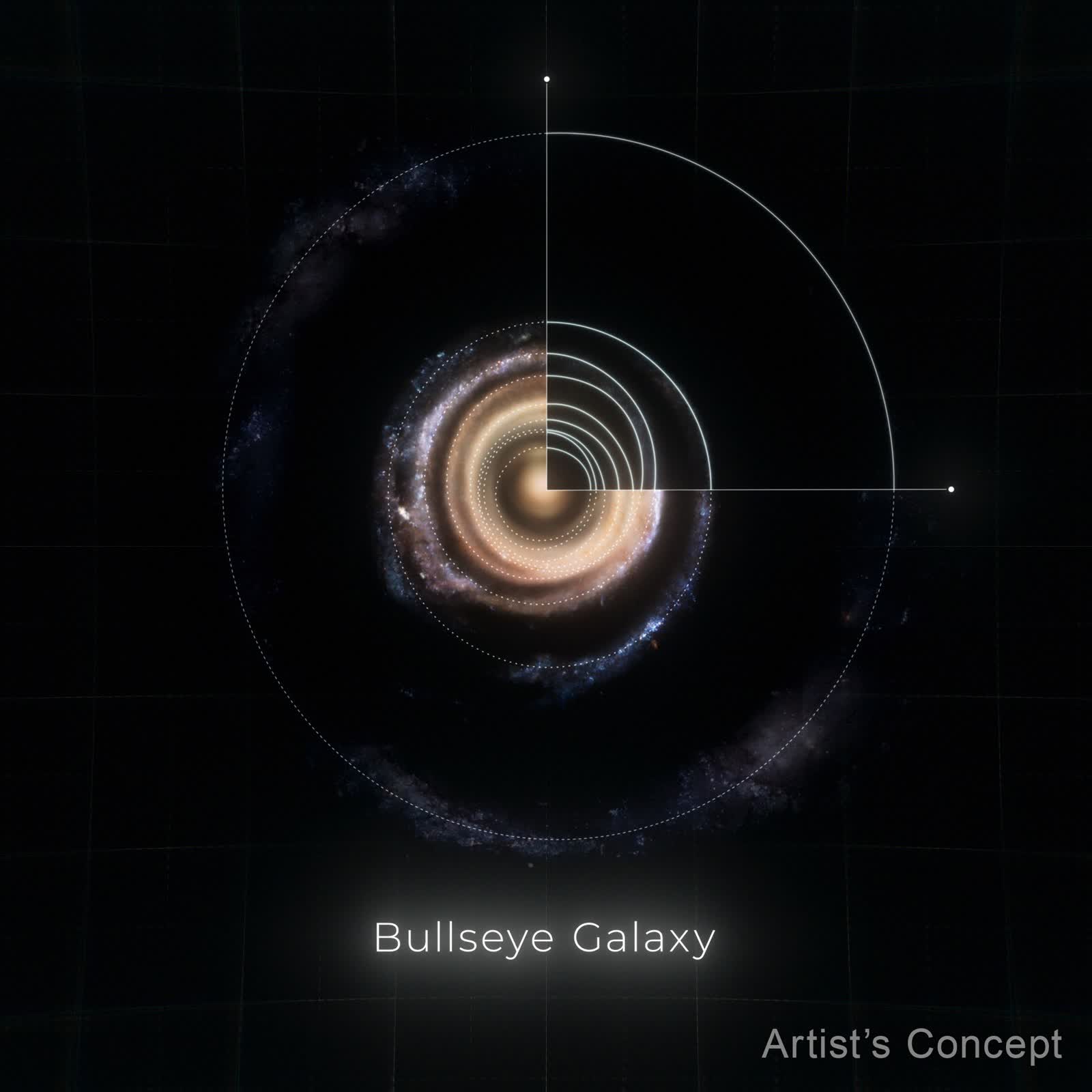The big picture: NASA’s Hubble Space Telescope has captured an extraordinary cosmic event that astronomers are calling the “Bullseye.” The massive galaxy LEDA 1313424 has been observed with an unprecedented nine star-filled rings, the result of a dramatic collision with a smaller blue dwarf galaxy.
The discovery was made by Imad Pasha, a doctoral student at Yale University, who stumbled upon the unique galaxy while examining a ground-based imaging survey. “This was a serendipitous discovery,” Pasha explained. “When I saw a galaxy with several clear rings, I was immediately drawn to it. I had to stop to investigate it.”
Subsequent observations using both the Hubble Space Telescope and the W. M. Keck Observatory in Hawaii confirmed the presence of nine rings, far surpassing the previous record of two or three rings observed in other galaxies.
The rings are believed to have formed 50 million years ago when a blue dwarf galaxy plunged through the center of LEDA 1313424 like an arrow. This cosmic collision created ripples similar to those formed when a pebble is dropped into a pond.
This is an extremely rare event, according to Professor Pieter G. van Dokkum, a co-author of the study, which appeared in The Astrophysical Journal Letters. “We’re catching the Bullseye at a very special moment in time. There’s a very narrow window after the impact when a galaxy like this would have so many rings.”
The Bullseye galaxy dwarfs our Milky Way, measuring an impressive 250,000 light-years across – nearly two and a half times larger than our home galaxy. The blue dwarf galaxy responsible for creating this cosmic spectacle now lies 130,000 light-years away, connected to the Bullseye by a thin trail of gas.
The Hubble Space Telescope’s exceptional resolution was instrumental in identifying most of the rings, particularly those clustered at the galaxy’s center. “This would have been impossible without Hubble,” Pasha said.
Perhaps most exciting for the scientific community is how the Bullseye galaxy aligns with existing theoretical models. “That theory was developed for the day that someone saw so many rings,” van Dokkum explained. “It is immensely gratifying to confirm this long-standing prediction with the Bullseye galaxy.”
The rings’ formation and expansion closely match predictions, with the first rings forming quickly and spreading outward, followed by subsequent rings created as the dwarf galaxy passed through.
This discovery opens up new avenues for research into galaxy collisions and their long-term effects. Astronomers will now work to determine which stars existed before and after the collision and how the galaxy may evolve over billions of years.
The chance discovery of the Bullseye galaxy also hints at the potential for future findings. Van Dokkum is particularly excited about the prospects offered by NASA’s upcoming Nancy Grace Roman Space Telescope. “Once NASA’s Nancy Grace Roman Space Telescope begins science operations, interesting objects will pop out much more easily. We will learn how rare these spectacular events really are.”
Source link

